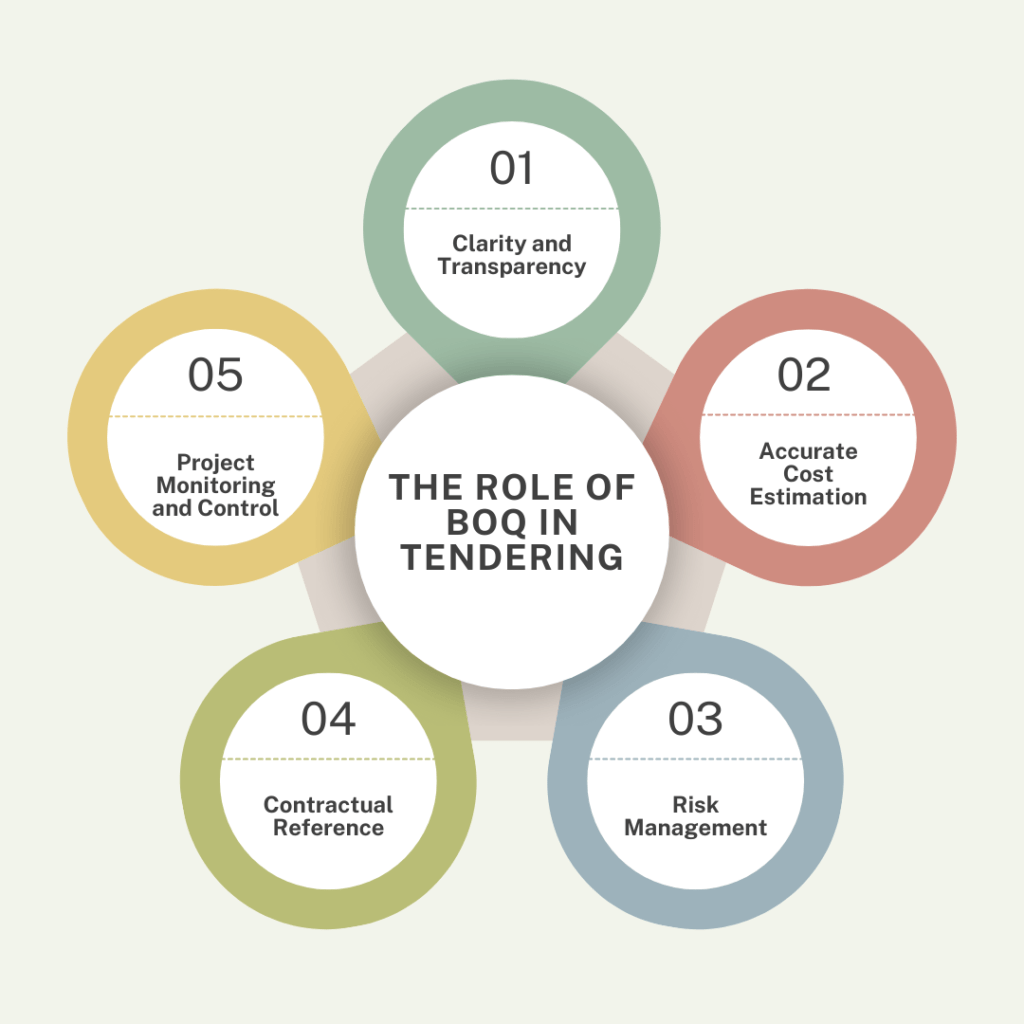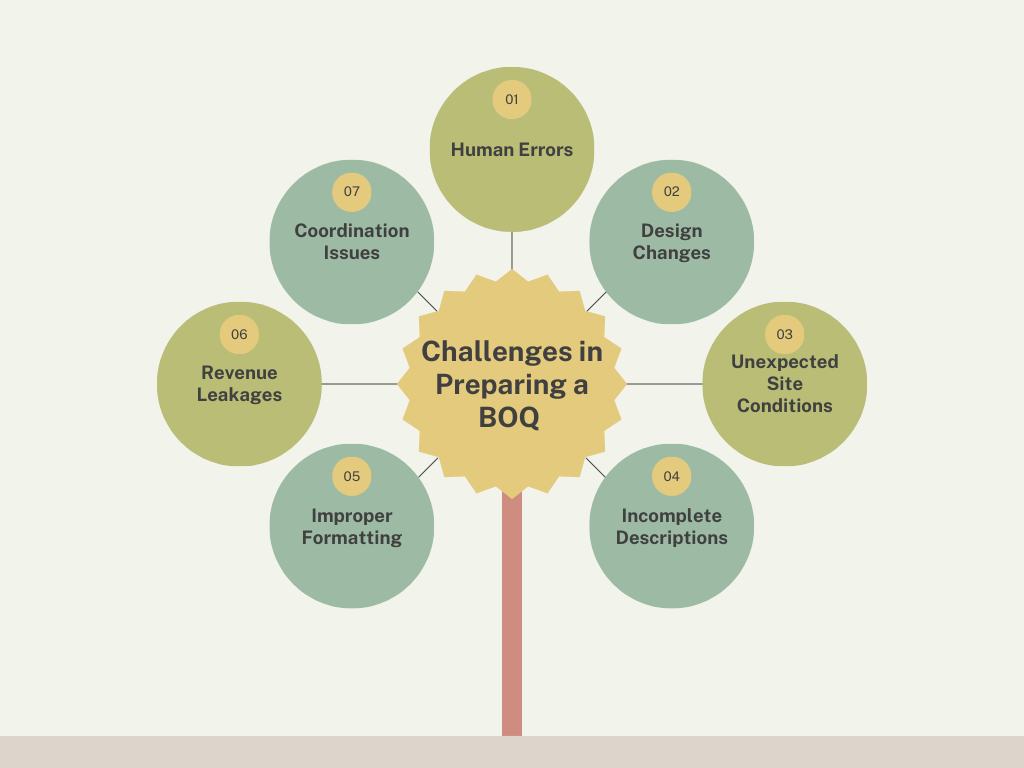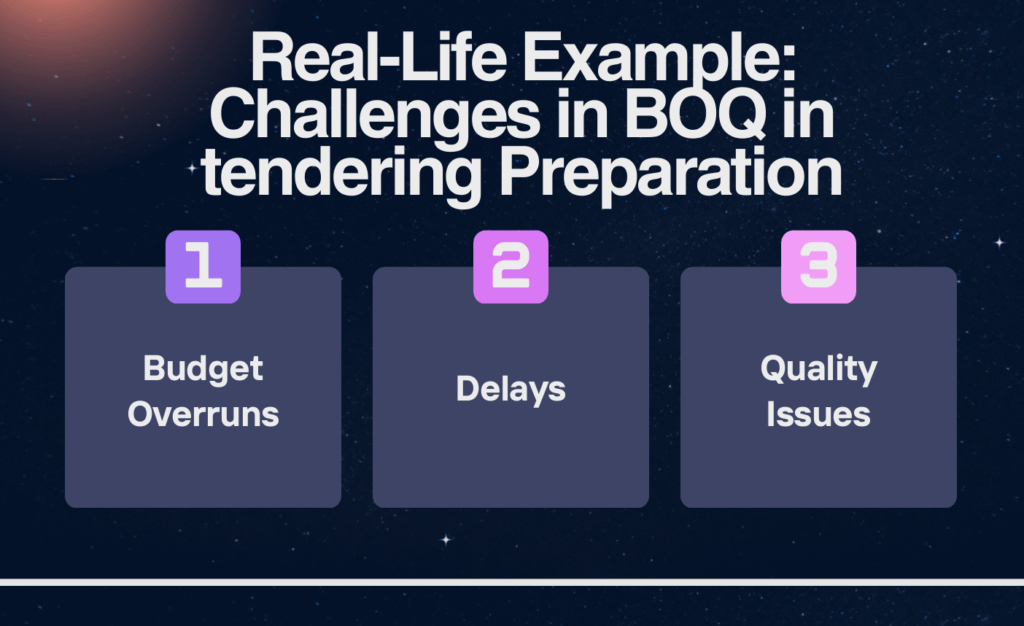BOQ in Tendering is the backbone of any successful tender in the construction industry. It offers a comprehensive breakdown of all materials, labor, and services required for a project, providing transparency and clarity to all parties involved. Accurately and efficiently filling out a BOQ is crucial, as it can be the deciding factor between securing a tender or losing it. By ensuring that the BOQ is meticulously prepared, contractors can present a well-informed proposal that aligns with project requirements and cost expectations. This blog delves into the best practices for filling out a BOQ in tendering, supported by industry insights and data-driven strategies.

In the highly competitive world of construction, the tendering process is a decisive factor in determining who gets to execute a project. The Bill of Quantities, BOQ in tendering is one of the most critical documents in this process, serving as a blueprint that guides contractors, clients, and project managers alike. A well-prepared BOQ not only provides a detailed list of materials, labor, and services required for a project but also plays a pivotal role in ensuring that all stakeholders have a clear understanding of the scope, cost implications, and timelines involved.
For construction companies in India, where the industry is booming, a meticulously prepared BOQ can be the difference between winning and losing a tender. This blog delves into the importance of BOQ in tendering, the challenges commonly faced in its preparation, and how advanced tools like RDash can streamline the process, ultimately leading to more successful project outcomes.
What is a Bill of Quantities (BOQ)?
A Bill of Quantities (BOQ) is a comprehensive document that itemizes every material, labor, and service required for a construction project. It typically includes the following:

- Item Names: The specific materials or tasks required.
- Descriptions: Detailed descriptions of each item or task.
- Quantities: The exact amount needed for each item.
- Rates: The cost per unit of each item or task.
- Costs: The total cost for each item or task, calculated by multiplying the quantity by the rate.
These items are usually grouped into sections such as Civil (e.g., Flooring, Partition, Glass), MEP (Mechanical, Electrical, and Plumbing), loose furniture, white goods, and more. The BOQ is typically prepared by Quantity Surveying (QS) teams, who study General Finishing Contractor (GFC) drawings to quantify every cost item. This document serves as a reference point throughout the project, ensuring that all parties involved are on the same page regarding what needs to be done and how much it will cost.
The Role of BOQ in Tendering
The BOQ in tendering is an indispensable tool in the tendering process for several reasons:

- Clarity and Transparency: A well-prepared BOQ provides clarity on what is expected in terms of materials, labor, and services. This transparency helps to avoid misunderstandings and disputes later in the project.
- Accurate Cost Estimation: The BOQ enables contractors to prepare accurate bids by providing a clear understanding of the project’s scope and associated costs. This is particularly important in India, where cost overruns are a common challenge in construction projects.
- Risk Management: By itemizing every aspect of the project, the BOQ helps in identifying potential risks and uncertainties early in the process. This allows for better planning and risk mitigation strategies.
- Contractual Reference: The BOQ serves as a contractual document that can be referred to in case of disputes. It provides a clear record of what was agreed upon at the outset of the project.
- Project Monitoring and Control: Throughout the construction process, the BOQ serves as a vital tool for monitoring progress and controlling costs. It allows project managers to track the actual expenditure against the budgeted costs, ensuring that the project stays within budget.
Cost Components in Construction Projects
| Cost Component | Description | Percentage of Total Cost* | Source |
|---|---|---|---|
| Materials | Raw materials required for construction (e.g., concrete, steel) | 40-50% | RICS, NBS |
| Labor | Workforce costs, including wages and benefits | 20-30% | RICS, Bureau of Labor Statistics |
| Equipment | Machinery and equipment costs | 5-10% | Construction Industry Institute |
| Overheads | Indirect costs (e.g., administration, supervision) | 10-15% | RICS |
| Profit | Contractor’s profit margin | 5-10% | RICS |
| Contingency | Allowance for unforeseen costs | 5-10% | Industry Best Practices |
Challenges in Preparing a BOQ
Despite its importance, preparing a perfect BOQ in tendering at the start of a project is no easy task. Several challenges can arise, many of which are exacerbated by the complex and dynamic nature of construction projects. Here are some of the most common challenges:

- Human Errors: The preparation of a BOQ involves a significant amount of manual work, which increases the risk of human errors. These errors can range from simple typographical mistakes to more serious issues like incorrect quantity estimations or misclassification of items.
- Design Changes: Construction projects are rarely static, and changes in design are common as the project progresses. These changes can render the original BOQ obsolete, requiring continuous updates to ensure that it remains accurate and relevant.
- Unexpected Site Conditions: No matter how thorough the initial site surveys are, unexpected conditions can always arise once construction begins. These conditions may necessitate changes to the BOQ, such as the addition of new items or the adjustment of quantities for existing items.
- Incomplete Descriptions: An incomplete or unclear description of a scope element can lead to deviations in the quality of work executed on-site. This can result in rework, delays, and additional costs, all of which can be avoided with a well-prepared BOQ.
- Revenue Leakages: One of the most significant risks associated with a poorly prepared BOQ is revenue leakage. This occurs when changes in scope are not documented in a timely manner, leading to costs that are not accounted for in the contract.
- Coordination Issues: The BOQ is a living document that must be updated continuously as the project progresses. A lack of coordination between procurement and project management teams can lead to critical long-lead items from the BOQ being unidentified and not procured on time, resulting in project delays.
Real-Life Example: Challenges in BOQ in tendering Preparation
To illustrate the importance of a well-prepared BOQ in tendering, let’s consider a real-life example from a large-scale infrastructure project in Mumbai. In this case, the contractor won the bid due to the detailed and accurate BOQ they submitted. The BOQ included every possible detail, from the type of flooring material to the specific specifications of the HVAC systems.
This attention to detail not only impressed the client but also ensured that the project was completed on time and within budget. The contractor avoided common pitfalls such as revenue leakages and scope creep by continuously updating the BOQ as the project progressed. As a result, the project was a resounding success, with both the client and the contractor benefiting from the clear communication and precise execution made possible by the detailed BOQ.
A construction company in Bangalore faced significant challenges due to an incomplete BOQ. The project involved the construction of a commercial complex, and the initial BOQ failed to account for several key items, including specialized electrical fittings and high-quality flooring materials. As a result, the project ran into several issues:

- Budget Overruns: The missing items were only identified later in the project, leading to unanticipated costs that caused the project to go over budget.
- Delays: The late procurement of these items delayed the project’s completion, frustrating both the contractor and the client.
- Quality Issues: The lack of detail in the BOQ also led to discrepancies in the quality of materials used, which had to be rectified at additional cost and time.
These challenges highlight the importance of a well-prepared BOQ and the need for continuous updates and coordination throughout the project.
Download the BOQ Template (Editable)
Remedies for Common BOQ in tendering Issues
Given the challenges outlined above, it is essential to implement strategies that can help in mitigating these risks. Here are some remedies that can improve the preparation and management of BOQs:
- Maintain Status Against Each BOQ Line Item: One effective strategy is to track the status of each BOQ line item, noting what has been approved by the client and what is still pending. This helps to prevent revenue leakages by ensuring that all changes are documented and accounted for.
- Create an Element Library: By developing a predefined catalogue of items, known as an element library, companies can standardize the descriptions and classifications used in their BOQs. This reduces the likelihood of errors and ensures consistency across projects.
- Develop Standard Templates: Standardizing the format of BOQs across the company can also help to minimize errors and improve the readability and usability of these documents. A standard template ensures that all relevant information is included and presented in a clear, organized manner.
- Implement a Procurement Tracker: A procurement tracker can be used to monitor the status of BOQ line items, including their procurement status and cost. This helps to avoid delays caused by unidentified or unprocured critical items.
- Continuous Training and Development: Providing continuous training to QS teams and project managers on the latest best practices in BOQ preparation can also help to reduce errors and improve the overall quality of BOQs.
RDash: A Modern Solution for BOQ Management
RDash is a construction management app that offers a comprehensive suite of tools designed to streamline the preparation and management of BOQs. By leveraging the capabilities of RDash, construction companies can overcome many of the challenges associated with BOQ preparation and ensure more successful project outcomes.

- Real-Time Updates and Tracking: One of the key features of RDash is its ability to provide real-time updates and tracking for each BOQ line item. This allows project managers to maintain an up-to-date record of what has been approved by the client and what is still pending, reducing the risk of revenue leakages.
- Element Library for Standardization: RDash includes an element library that allows users to create a predefined catalogue of items. This feature ensures better control over item descriptions and classifications, reducing the likelihood of errors and inconsistencies.
- Standardized Templates: RDash provides standardized templates for creating project BOQs, ensuring that all relevant information is included and presented in a clear, organized manner. This helps to improve the readability and usability of BOQs, making them easier to manage.
- Procurement Tracking: RDash includes a procurement tracker that enables users to monitor the status of BOQ line items, including their procurement status and cost. This helps to avoid delays caused by unidentified or unprocured critical items.
- Reporting and Analytics: RDash also offers powerful reporting and analytics tools that allow project managers to track progress, monitor costs, and identify potential risks. These insights can be used to make data-driven decisions that improve project outcomes.
Conclusion
The Bill of Quantities (BOQ) is a critical document in the tendering process, serving as the blueprint for project execution. A well-prepared BOQ can help to ensure clarity, transparency, and accurate cost estimation, while also serving as a valuable tool for project monitoring and control. However, preparing and managing a BOQ is not without its challenges, and it is essential to implement strategies that can help to mitigate these risks.
By leveraging modern tools like RDash, construction companies can overcome many of the challenges associated with BOQ preparation and ensure more successful project outcomes. Whether it’s tracking the status of BOQ line items, standardizing descriptions and classifications, or monitoring procurement, RDash provides the tools and insights needed to streamline the process and deliver better results.
In an industry as competitive as construction, particularly in India, a meticulously prepared BOQ can be the difference between winning and losing a tender. By investing in the right tools and strategies, construction companies can ensure that their BOQs are accurate, comprehensive, and up-to-date, ultimately leading to more successful projects and satisfied clients.
FAQs
What’s the main goal of BOQs in tenders?
The main goal of a Bill of Quantities (BOQ) in tenders is to provide a detailed and clear breakdown of all materials, labor, and services required for a construction project. This clarity helps contractors prepare accurate bids, ensures transparency, and facilitates smooth communication among stakeholders.
What challenges are commonly faced in preparing BOQs?
Common challenges include human errors in quantities or descriptions, frequent design changes, unexpected site conditions, incomplete item descriptions, revenue leakages from undocumented scope changes, and coordination gaps that cause procurement delays.
What is a BOQ in tenders and why does it matter?
A BOQ in tenders is a comprehensive document listing every item needed for a project, including quantities and costs. It is important because it offers transparency on project scope and costs, aids in risk management, serves as a contractual reference, and helps monitor progress and control expenses throughout the construction process.







